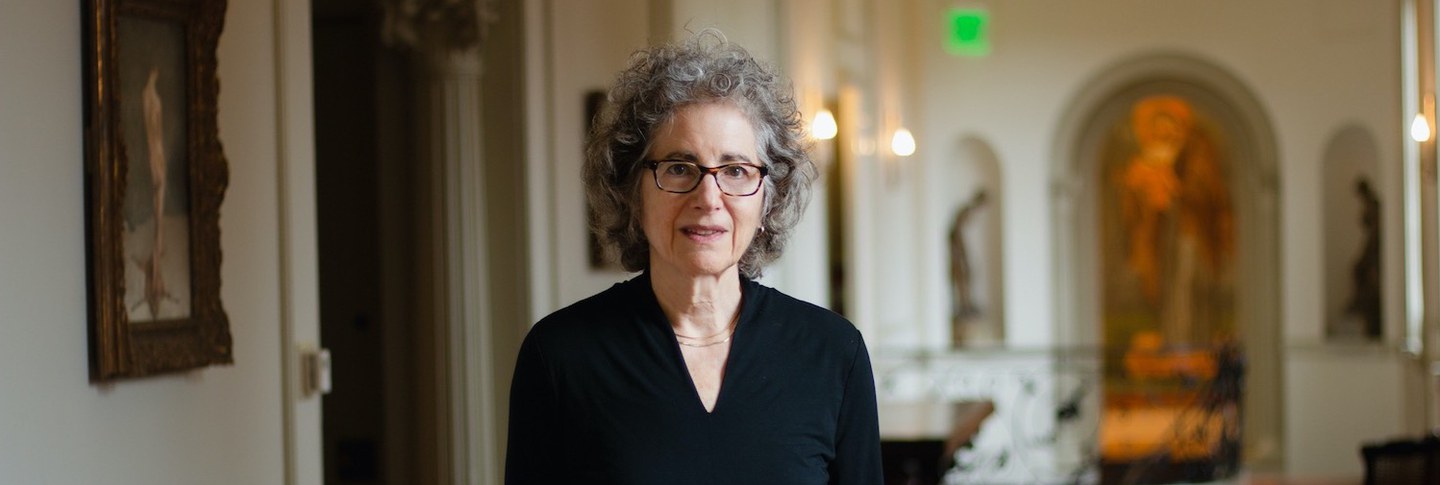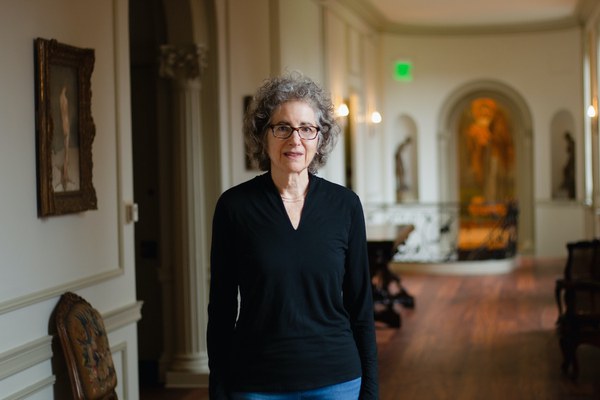Patricia Vigderman, assistant professor of English emerita at Kenyon College and a two-time visiting artist at the American Academy in Rome, was a visiting scholar in fall 2019. Her writing explores time and cultural identity; she is currently at work on a book-length essay, Roman Variations.
Q&A with Patricia Vigderman
While working on your last book, The Real Life of the Parthenon, what did you find that you didn’t expect?
Going back to Athens for the first time in many years, the real surprise was the reconstruction on the Acropolis. When I was a college student, you could kind of wander up and enter at any time, sometimes even at night. There wasn’t the same kind of intense care and attention. Now it’s seriously gated; when I was there it was covered in scaffolding, with people working on it. It was really a worksite.
I’m interested in the ambition of the reconstruction and impressed by the care. Even if everyone on the Acropolis is a tourist, it doesn’t mean the Greeks themselves don’t feel a real sense of ownership of their own heritage.
I loved the new Acropolis museum. The old one was dusty and cramped; it didn’t have room for everything. The new one is magnificent. The way they’ve displayed the frieze on the top floor gives you a sense of the awe people must have felt in antiquity. And then that’s surrounded by glass walls, so you see out to the city itself and up to the Acropolis.
Turning to Rome, what about this city has captivated artists and writers for so long?
Like Athens, it’s the lure of antiquity, the imagined place where our Western heritage began. For Americans especially, there’s fascination with the power of Rome. Here in Washington, DC, going to the National Gallery, passing all those huge government buildings, I see—the city is Rome!
My book is loosely modeled on musical variations, with a theme and then many different iterations. Rome has been so thoroughly explored by so many people and in so many different ways, it’s almost a cliché, it’s almost banal. So the joke of my theme is that it’s the banality of eternality. But then the question is, how do you see Rome afresh? How do you make it new?
I think it can always be done. What’s particularly interesting to me in Rome is the way the past and the present work together. Rome has so many different stories that can be told about it, historically and aesthetically. Here at Dumbarton Oaks, I hope to talk to [Garden and Landscape Studies fellow] Annette Giesecke about the work she’s been doing with Roman gardens.
What are some examples of Rome seen in new ways?
There’s a museum called the Montemartini, now a branch of the Musei Capitolini. It was originally the first electrical plant in Rome, and when the Capitolini was being refurbished, they moved a lot of ancient art into the old electrical plant because it was available. But they didn’t take out the old machinery. The effect was striking, and so popular they made the plant a branch of the museum. You go into this old electrical plant, and part of the exhibit is about the obsolete technology. Marble Roman heads and other antiquities are displayed against the huge black machinery. It’s very charged, to use an electrical term. The sense of time you get is extraordinary. It makes you see the antiquities in a completely new way.
Another space that’s interesting to me is a planned suburb Mussolini created, called EUR. He was imagining the city of the future, his Roman empire. It’s insane but also fascinating. Huge boulevards, incredibly high buildings: it’s like ancient Rome on steroids. One of the buildings, known as the Square Colosseum, has in each great arch a sculpture embodying a godlike Roman attribute. Today this huge edifice is the headquarters of Fendi, the fashion house. The day I visited, there was a demonstration of the skillful process of how they make things—like shoes or a handbag—from crocodile skins through the exact way they wrap tissue paper around the shoes.
And then right near this Mussolinian dreamscape is the medieval Tre Fontane Abbey—named for the three fountains that sprang from the ground when St. Paul’s head was chopped off and bounced three times. It’s a Trappist monastery in a eucalyptus grove—the antithesis of EUR.
So you get these juxtapositions in Rome that are quite startling. The contradictions are very interesting to me and of course ripe for variation. And then there are the wonderful clichés. You go into the Pantheon, and here is one more amazed person looking at the rain coming through the oculus. But it’s heart-stopping. It’s as if you’ve become one with everybody else who’s ever been there, with all the engravings and photographs of it you’ve seen. Somehow the city keeps its magic.
Julia Ostmann is postgraduate writing and reporting fellow at Dumbarton Oaks. Photo by Elizabeth Muñoz Huber, postgraduate digital media fellow.

